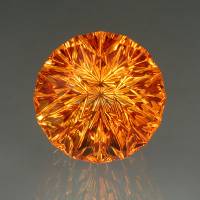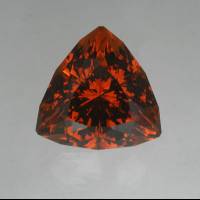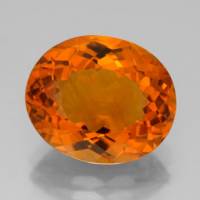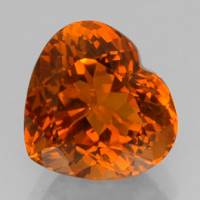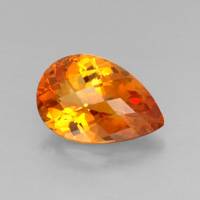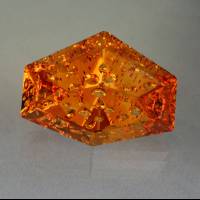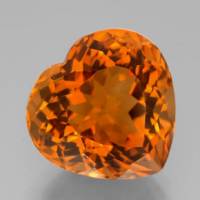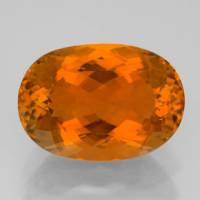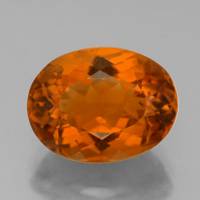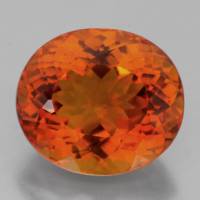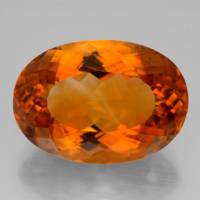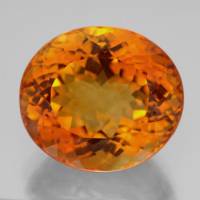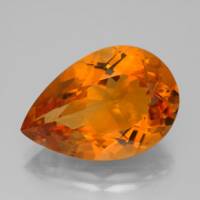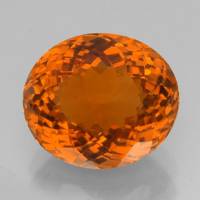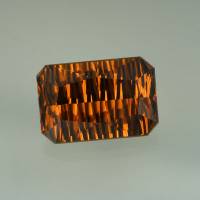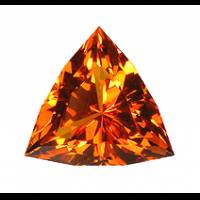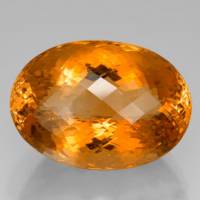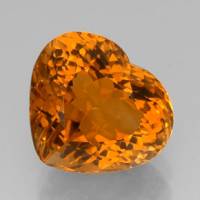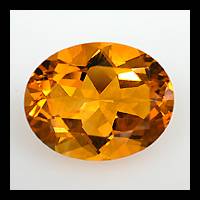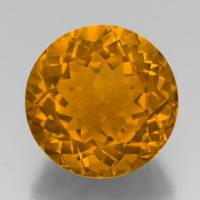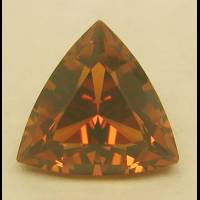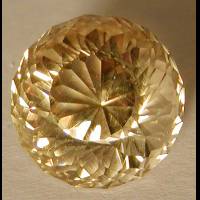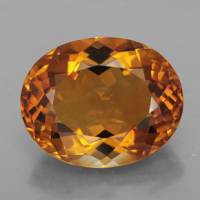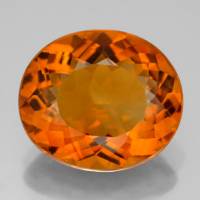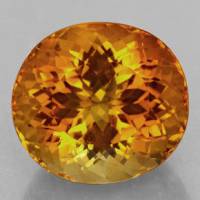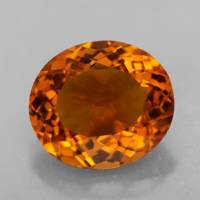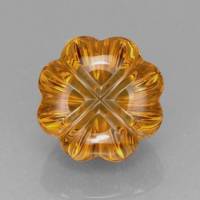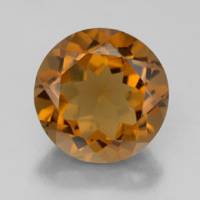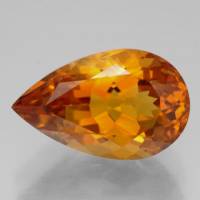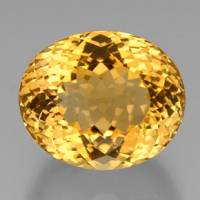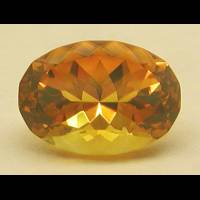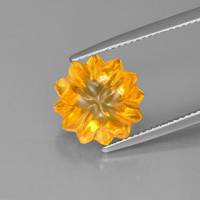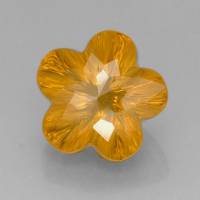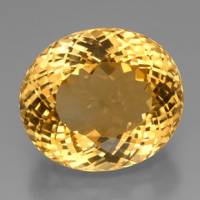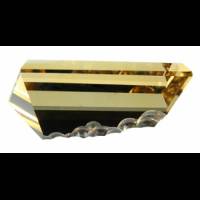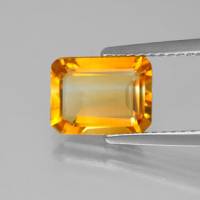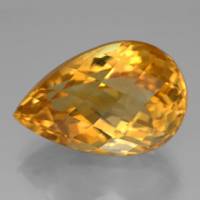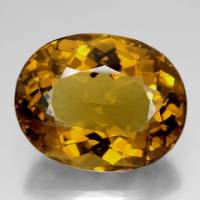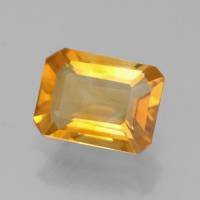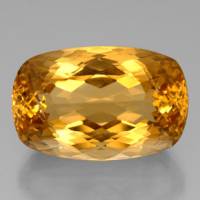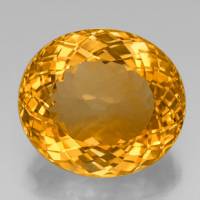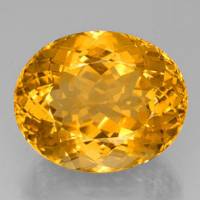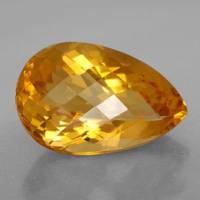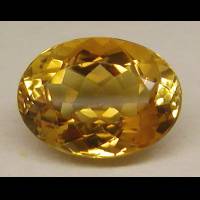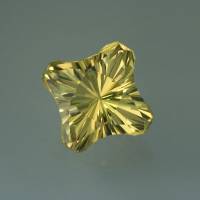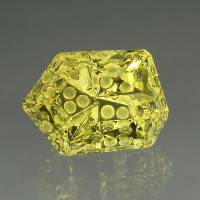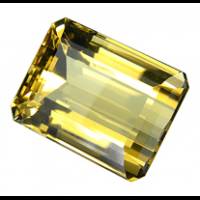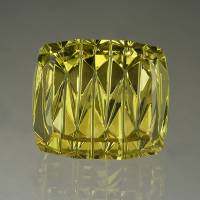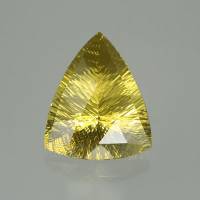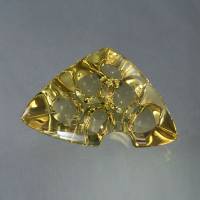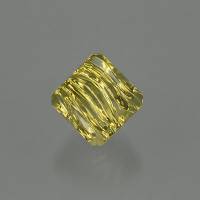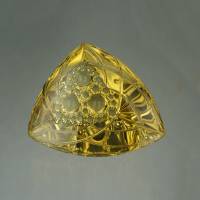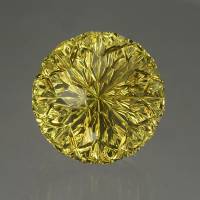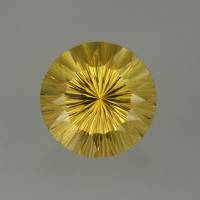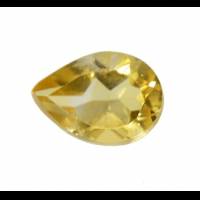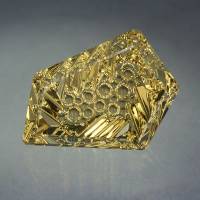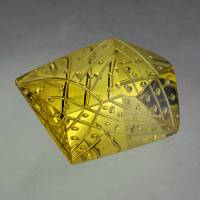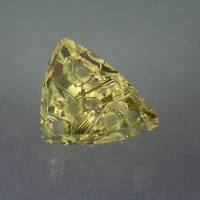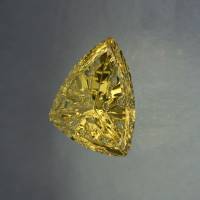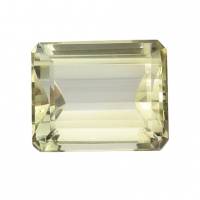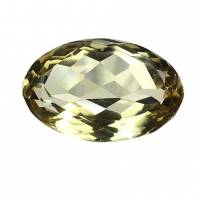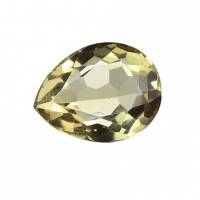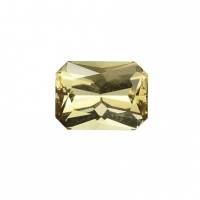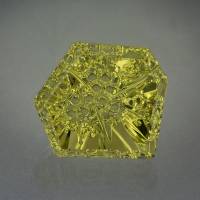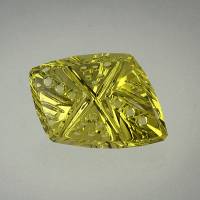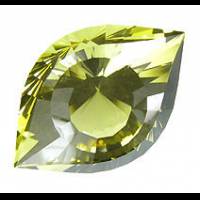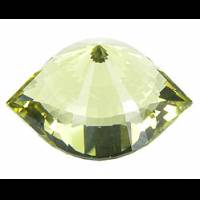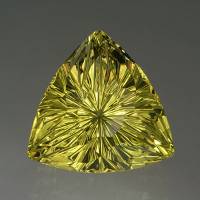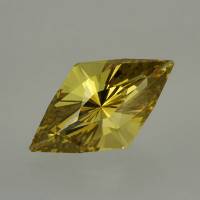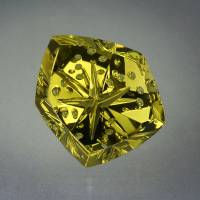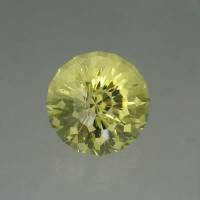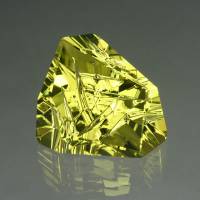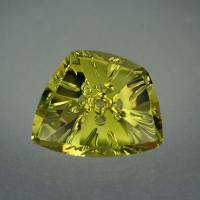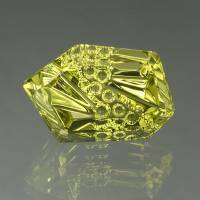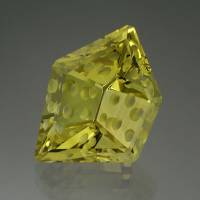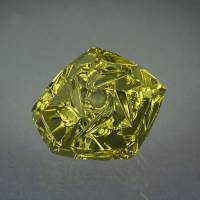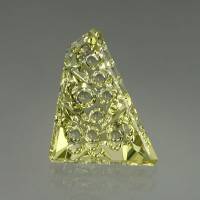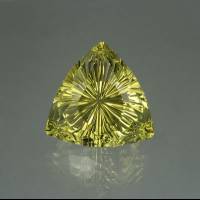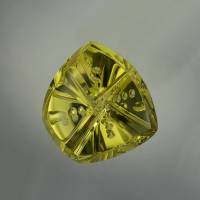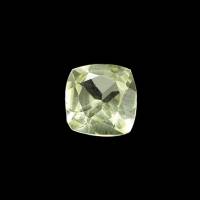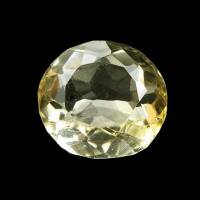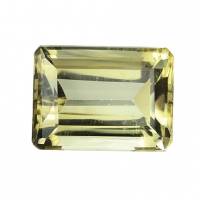Citrine
The name Citrine is derived from its lemon yellow colour.
Citrine is sometimes very pale or almost colourless. Among deeper coloured stones may be seen wine-yellow, honey-yellow, and saffron-yellow specimens, while others have quite a pronounced brown tinge. Stones of a deep brownish-yellow colour are very similar to topaz, and those of a fine golden-yellow are quite equal in beauty to yellow topaz and can scarcely be distinguished on mere inspection from latter stone except by an expert.
Natural citrines are rare. Most commercial citrine is heat-treated amethyst or smoky quartz. Because the color is now caused by finely distributed iron minerals (mostly hematite and goethite), heated amethyst is not a citrine in the strict sense.
Quartz colored by inclusions of any kind is not called a citrine.
Citrine is sometimes very pale or almost colourless. Among deeper coloured stones may be seen wine-yellow, honey-yellow, and saffron-yellow specimens, while others have quite a pronounced brown tinge. Stones of a deep brownish-yellow colour are very similar to topaz, and those of a fine golden-yellow are quite equal in beauty to yellow topaz and can scarcely be distinguished on mere inspection from latter stone except by an expert.
Natural citrines are rare. Most commercial citrine is heat-treated amethyst or smoky quartz. Because the color is now caused by finely distributed iron minerals (mostly hematite and goethite), heated amethyst is not a citrine in the strict sense.
Quartz colored by inclusions of any kind is not called a citrine.
Citrine Gemstones by Colour
This table shows the variety of hues this gemstone can be found in. Click on a photo for more information.
Citrine Gemstones by Size
This table shows distribution of Citrine gemstone sizes that are listed on this site. This can give a good indication as to the general availability of this gemstone in different sizes.
Contributed photos
Lightest:0.26 cts
Heaviest:105.9 cts
Average:25.10 cts
Total photos:166
Do you have a larger Citrine? Why not upload a photo?
| General Information | |||||||||||||||||||||||||||||||||||||||||||||
|---|---|---|---|---|---|---|---|---|---|---|---|---|---|---|---|---|---|---|---|---|---|---|---|---|---|---|---|---|---|---|---|---|---|---|---|---|---|---|---|---|---|---|---|---|---|
| A variety or type of: | Quartz | ||||||||||||||||||||||||||||||||||||||||||||
| Chemical Formula |
| ||||||||||||||||||||||||||||||||||||||||||||
| Citrine Treatments | |||||||||||||||||||||||||||||||||||||||||||||
| Routinely produced by heat-treatment of (smoky) amethyst: reddish tint, may show reddish-brown hematite inclusions (surrounded by crack). Non-dichroic unlike natural - Blue Chart Gem Identification, Herve Nicolas Lazzarelli, 2010, p 7 | |||||||||||||||||||||||||||||||||||||||||||||
| Citrine Simulants | |||||||||||||||||||||||||||||||||||||||||||||
| Large quantities of amethyst, usually of lesser quality, are heated to turn it yellow or orange and sold as "citrine." Because the color is now caused by finely distributed iron minerals (mostly hematite and goethite), heated amethyst is not citrine in the strict sense. Thin coatings of iron oxides on colourless quartz, as well as inclusions of yellow iron oxides ("limonite"), may simulate citrine. | |||||||||||||||||||||||||||||||||||||||||||||
| Physical Properties of Citrine | |||||||||||||||||||||||||||||||||||||||||||||
| Mohs Hardness | 7, Blue Chart Gem Identification (2010) | ||||||||||||||||||||||||||||||||||||||||||||
| Specific Gravity | 2.65, Gemmological Tables (2004) | ||||||||||||||||||||||||||||||||||||||||||||
| Tenacity | Brittle, Gemstones of the world (2001) Very brittle | ||||||||||||||||||||||||||||||||||||||||||||
| Cleavage Quality | None, Gemstones of the world (2001) | ||||||||||||||||||||||||||||||||||||||||||||
| Fracture | Conchoidal, Gems, Sixth Edition (2006) | ||||||||||||||||||||||||||||||||||||||||||||
| Optical Properties of Citrine | |||||||||||||||||||||||||||||||||||||||||||||
| Refractive Index | 1.544 to 1.553, Blue Chart Gem Identification (2010) | ||||||||||||||||||||||||||||||||||||||||||||
| Optical Character | Uniaxial/+, Gemmological Tables (2004) | ||||||||||||||||||||||||||||||||||||||||||||
| Birefringence | 0.009, Gemmological Tables (2004) | ||||||||||||||||||||||||||||||||||||||||||||
| Pleochroism | Natural: weak; yellow - light yellow. Heat-treated: none, Gemstones of the world (2001) More from other references | ||||||||||||||||||||||||||||||||||||||||||||
| Dispersion | 0.013, Gemstones of the world (2001) | ||||||||||||||||||||||||||||||||||||||||||||
| Chatoyancy | Star 6, Blue Chart Gem Identification (2010) | ||||||||||||||||||||||||||||||||||||||||||||
| Colour | |||||||||||||||||||||||||||||||||||||||||||||
| Colour (General) | Light yellow to dark yellow, gold-brown, Gemstones of the world (2001) More from other references | ||||||||||||||||||||||||||||||||||||||||||||
| Causes of Colour | Yellow to orange, O2-→Fe3+ charge transfer, various Al3+ related color centers., Pragmatic Spectroscopy For Gemologists (2011) | ||||||||||||||||||||||||||||||||||||||||||||
| Transparency | Transparent,Translucent, Gemmological Tables (2004) | ||||||||||||||||||||||||||||||||||||||||||||
| Lustre | Vitreous, Management Team (2012) | ||||||||||||||||||||||||||||||||||||||||||||
| Fluorescence & other light emissions | |||||||||||||||||||||||||||||||||||||||||||||
| Fluorescence (General) | None, Gemstones of the world (2001) | ||||||||||||||||||||||||||||||||||||||||||||
| Crystallography of Citrine | |||||||||||||||||||||||||||||||||||||||||||||
| Crystal System | Trigonal, Gemmological Tables (2004) | ||||||||||||||||||||||||||||||||||||||||||||
| Habit | Hexagonal prisms with pyramids, Gemstones of the world (2001) More from other references | ||||||||||||||||||||||||||||||||||||||||||||
| Further Information | |||||||||||||||||||||||||||||||||||||||||||||
| Mineral information: | Citrine information at mindat.org | ||||||||||||||||||||||||||||||||||||||||||||
| Significant Gem Localities | |||||||||||||||||||||||||||||||||||||||||||||
| |||||||||||||||||||||||||||||||||||||||||||||

